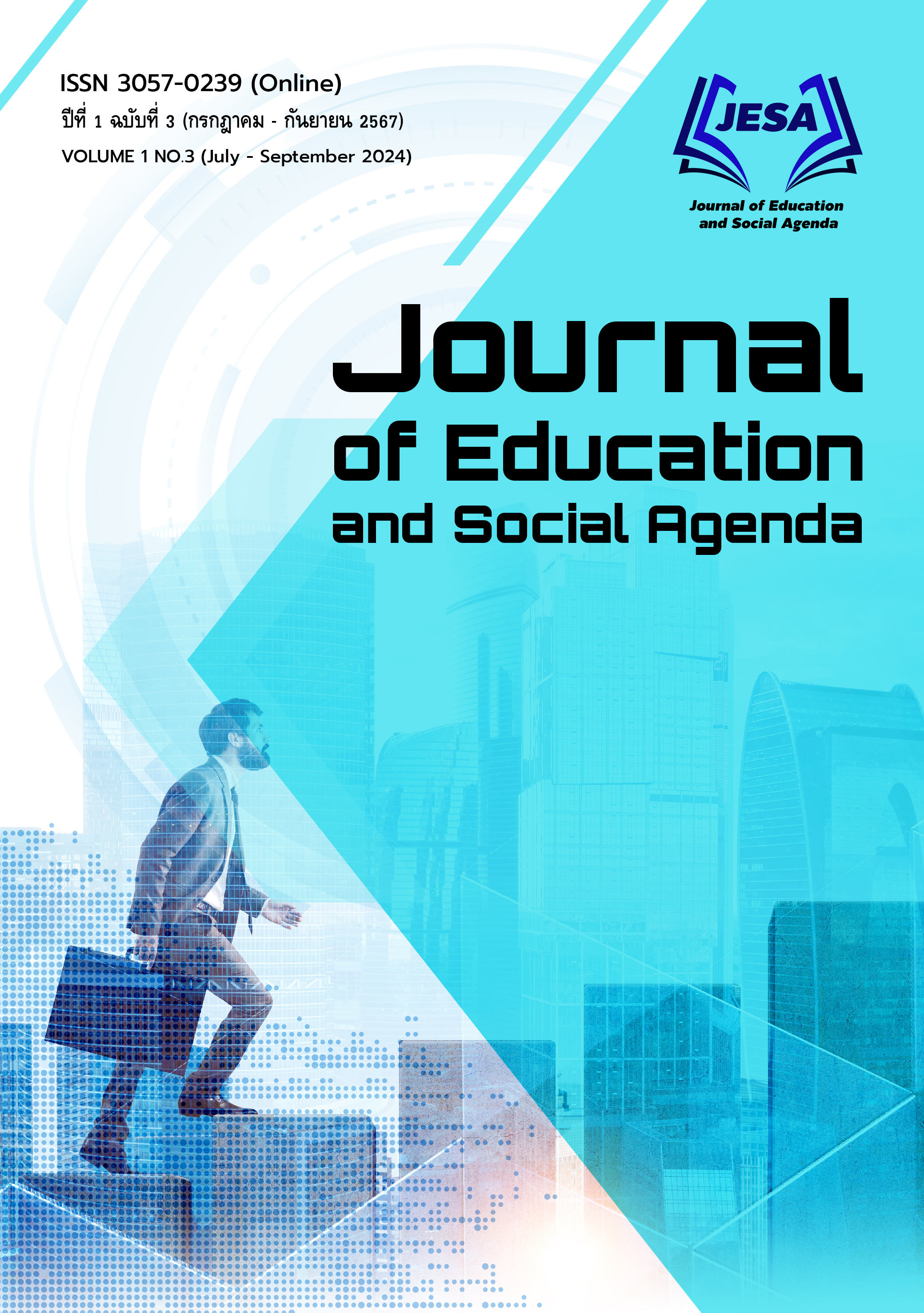Public Participation in the Management of Maf Sa Sub-District Administrative Organization Wiang Sa DistrictI, Nan Province
Keywords:
Participation, Administration , Sub-district Administrative OrganizationAbstract
The research article's aims to 1) look into how much the public takes part in government; 2) compare how much people take part in government based on personal factors; and 3) look into the issues, challenges, and suggestions for public participation in the Mae Sa Subdistrict Administrative Organization, Wiang Sa District, Nan Province, with the goal of not getting in the way of things. We conducted the research using a mixed-methods approach, specifically a quantitative survey of 352 individuals aged 18 and over. We performed data analysis using frequency, percentage, mean, standard deviation, t-test, F-test, and the least significant difference method. We also conducted qualitative research by conducting in-depth interviews with nine key informants and presenting the findings through content analysis techniques. The research findings revealed that 1) Public participation in the management of the Mae Sa Subdistrict Administrative Organization, Wiang Sa District, Nan Province, is generally high. Additionally, according to the principle of non-tyranny, public participation in the management of the Mae Sa Subdistrict Administrative Organization is generally high. 3) Using the principles of the Seven Uncontaminated Virtues, we identified problems, obstacles, and suggestions for public participation in the administration of the Mae Sa Subdistrict Administrative Organization, Wiang Sa District, Nan Province. These include: 1) Planning, managing, consulting, discussing, communicating, coordinating, and reporting results through meetings; 2) Always attending meetings on time and never missing them; 3) Not establishing regulations or rules based on the demands of individuals, groups, or influential persons; 4) Complying with the orders of superiors to ensure that operations achieve the organization's objectives, missions, and policies; 5) Providing opportunities for women to participate in administration and play a role; 6) promoting, supporting, and nurturing awareness of the local culture and good traditions; and 7) protecting and safeguarding Buddhism by supporting Buddhist projects and activities.
References
นิติพงษ์ พงศ์วิทยเวคิน. (2551). การมีส่วนร่วมของประชาชนในการดำเนินงานขององค์การบริหารส่วนตำบลในเขตอำเภอศรีสัชนาลัย จังหวัดสุโขทัย. (วิทยานิพนธ์รัฐประศาสนศาสตรมหาบัณฑิต). บัณฑิตวิทยาลัย : มหาวิทยาลัยราชภัฏอุตรดิตถ์.
พระธวัชชัย สนฺติธมฺโม (วรรณนาวิน). (2561). การมีส่วนร่วมของประชาชนในการพัฒนาชุมชนในเขตเทศบาลเมืองสระแก้ว จังหวัดสระแก้ว. (สารนิพนธ์รัฐประศาสนศาสตรมหาบัณฑิต). บัณฑิตวิทยาลัย : มหาวิทยาลัยมหาจุฬาลงกรณราชวิทยาลัย.
พระนุชิต นาคเสโน (โพวิชัย). (2561). การมีส่วนร่วมของประชาชนในการบริหารงานกำจัดมูลฝอยของเทศบาลตำบลทุ่งหลวง อำเภอสุวรรณภูมิ จังหวัดร้อยเอ็ด. (สารนิพนธ์รัฐประศาสนศาสตรมหาบัณฑิต). บัณฑิตวิทยาลัย : มหาวิทยาลัยมหาจุฬาลงกรณราชวิทยาลัย.
พระวีรเดช ฐานวีโร (หงษเงิน). (2558). การมีส่วนร่วมของประชาชนในการบริหารงานขององค์การบริหาร ส่วนตำบลท่าแดง อำเภอหนองไผ่ จังหวัดเพชรบูรณ์. (วิทยานิพนธ์พุทธศาสตรมหาบัณฑิต สาขาวิชารัฐประศาสนศาสตร์). บัณฑิตวิทยาลัย : มหาวิทยาลัยมหาจุฬาลงกรณราชวิทยาลัย.
รัฐธรรมนูญแห่งราชอาณาจักรไทย 2560. (2560, 6 เมษายน 2560) ราชกิจจานุเบกษา เล่ม 134 ตอนที่ 40 ก, หน้า 1-90.
สิน พันธุ์พินิจ. (2547). เทคนิคการวิจัยทางสังคมศาสตร์. กรุงเทพฯ : บริษัทจูนพับลิชชิ่งจำกัด.
องค์การบริหารส่วนตำบลแม่สา. (2565). แผนพัฒนาท้องถิ่น (พ.ศ.2566-2570). (อัดสำเนา)
Yamane, T. (1973). Statistics : An Introductory Analysis. (3rd ed.). New York : Harper and Row.

Downloads
Published
How to Cite
Issue
Section
License
Copyright (c) 2024 Asia Connect Journal

This work is licensed under a Creative Commons Attribution-NonCommercial-NoDerivatives 4.0 International License.
This article is published under a Creative Commons Attribution-NonCommercial-NoDerivatives 4.0 International License (CC BY-NC-ND 4.0), which allows others to share the article with proper attribution to the authors and prohibits commercial use or modification. For any other reuse or republication, permission from the journal and the authors is required.

